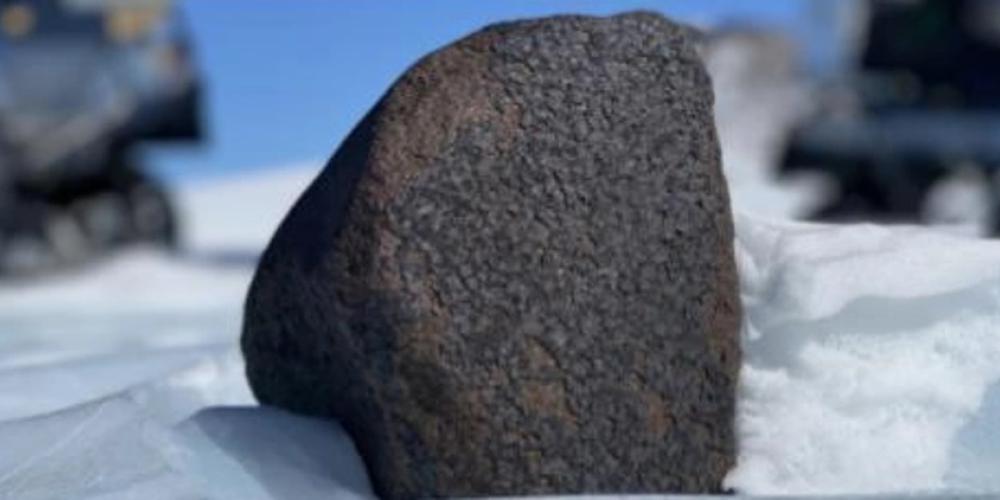
An international team led by Vinciane Debaille (FNRS-ULB), in which VUB student Ryoga Maeda also participated, returned from Antarctica with a remarkable find. During prospecting in the wide surroundings of the Belgian Princess Elisabeth Antarctica Station, they found a hefty meteorite weighing no less than 7.6 kilograms. The scientific mission, which has been searching for meteorites and micrometeorites at the South Pole for several years, explored several potentially interesting find areas for meteorites during this campaign using satellite images and GPS coordinates.
Those areas were identified with machine learning by Veronica Tollenaar, a glaciology student at ULB. Using some relevant parameters, Tollenaar predicted where the expedition members had the best chances of finding meteorites, according to the computer. With success, the first results of the expedition now show.
The team was able to draw on the experience of Alain Hubert, who knows the region well, and was able to open roads to avoid dangerous areas.
The team camped at -10°C, covered dozens of kilometres over sastrugis, wind-hardened snow dunes, and lived by the sound of snowmobiles. They explored the Nils Larsen blue ice zone, about 60 kilometres from the station, and were able to conclude that, as predicted, it is effectively an accumulation zone for meteorites, which requires further investigation.
"The most impressive find in the area is a meteorite is one weighing 7.6 kg," says VUB researcher Ryoga Maeda. "The object comes from the asteroid belt and probably plopped down into the Antarctic blue ice several tens of thousands of years ago." According to Ryoga Maeda, it is an "ordinary chondrite", and the meteorite contains a lot of metal (H-type).
The collected meteorites must now thaw properly under controlled conditions in the laboratory of the Royal Belgian Institute of Natural Sciences. "After that, they will be analysed for their chemical composition and made available to the scientific community for further research," Maeda said.
The mission was possible thanks to funding from the Belgian Science Policy Office (Belspo). More than 600 meteorites have been collected in the past during previous VUB-ULB-NIPR missions to the Nansen Blue Ice Field. The inernational team that participated in this campaign includes Maria Schönbächler (ETH-Zürich) and Maria Valdes (Field Museum of Natural History-U. Chicago. Manu Poudelet (International Polar Guide Association) was the on-site guide.